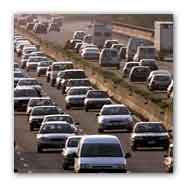News and Insights for
your best life. Online since 1998
- Home Health
- Breaking news
- In caso di...
- Per saperne di
più... - Medicina occidentale
- Medicine complementari
- Medicina cinese
e agopuntura - Omeopatia
- Fitoterapia

Teens whose brain chemistry is less affected by stressful situations could be at increased risk for car crashes, a small Canadian study suggests.
The brain calls for the release of cortisol as part of its "fight-or-flight" response to stressful or dangerous situations. In the study, teens more likely to crash or come close to crashing a car tended to have less cortisol in their system, indicating that their response to a risky situation may be blunted in some way, researchers say.

"It tells us that maybe some people are more neurobiologically predisposed to risk-taking, or maybe less able to change their driving as a result of experience," said Ouimet.
Road traffic crashes are one of the leading causes of injury and death among teenagers worldwide. Better understanding of the individual pathways to driving risk may lead to better-targeted intervention in this vulnerable group.
The Naturalistic Teenage Driving Study was designed to examine the relationship between cortisol, a neurobiological marker of stress regulation linked to risky behavior, and driving risk and to continuously monitor the driving behavior of teenagers by instrumenting vehicles with kinematic sensors, cameras, and a global positioning system.
During 2006-2008, a community sample of 42 newly licensed 16-year-old volunteer participants in the United States was recruited and driving behavior monitored. It was hypothesized in teenagers that higher cortisol response to stress is associated with lower crash and near-crash (CNC) rates during their first 18 months of licensure and faster reduction in CNC rates over time.
Main Outcomes and Measures Participants’ cortisol response during a stress-inducing task was assessed at baseline, followed by measurement of their involvement in CNCs and driving exposure during their first 18 months of licensure. Mixed-effect Poisson longitudinal regression models were used to examine the association between baseline cortisol response and CNC rates during the follow-up period.
Participants with a higher baseline cortisol response had lower CNC rates during the follow-up period (exponential of the regression coefficient, 0.93; 95% CI, 0.88-0.98) and faster decrease in CNC rates over time (exponential of the regression coefficient, 0.98; 95%, CI, 0.96-0.99).
Cortisol is a neurobiological marker associated with teenaged-driving risk. As in other problem-behavior fields, identification of an objective marker of teenaged-driving risk promises the development of more personalized intervention approaches.
See also
Talking and texting while driving in the United States and Europe (11/06/2012)
Survey reveals driver behaviours, fears and fantasies (2013-10-03)
For more information
Higher Crash and Near-Crash Rates in Teenaged Drivers With Lower Cortisol ResponseAn 18-Month Longitudinal, Naturalistic Study
MDN
del Dott. Turetta
Quali sono i problemi o le disfunzioni che possono giovarsi di un intervento omeopatico d'urgenza e, di conseguenza, come dovrebbe essere un ideale armadietto medicinale omeopatico casalingo.- Home -
- Health -
- Depressione -
- Sexuality
- Environment -
- Food -
- Musica -
- Capirsi -
- Grafologia -
- Ridere
Copyright © 1998/2018 www.mybestlife.com tutti i diritti sono riservati eccetto quelli già di altri proprietari.
.In caso di
Pubblicità
Per saperne di più su
Pubblicità
Pubblicità
Pubblicità
Pubblicità


